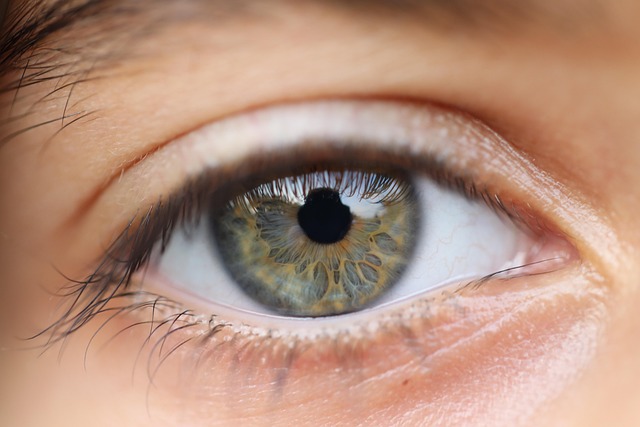Workstation and lighting modifications to reduce transient visual haze
Practical adjustments to lighting and workstation setup can lessen temporary visual haze experienced during or after screen work. This article outlines ergonomic, optical, and diagnostic considerations to support clearer vision at work and guide conversations with eye care professionals.

Workstation lighting and posture can significantly influence short-term blurring or haziness of vision experienced by people who spend long periods on screens or in variable lighting. Small changes—like reducing direct glare, optimizing ambient illumination, and checking near-vision prescriptions—often reduce symptoms. This article explains practical steps grounded in ophthalmology and optics to help reduce transient visual haze while noting when clinical evaluation is appropriate.
This article is for informational purposes only and should not be considered medical advice. Please consult a qualified healthcare professional for personalized guidance and treatment.
How does ophthalmology inform workstation changes?
Ophthalmology provides the clinical framework for evaluating causes of transient visual haze, from benign refractive errors to early ocular surface disease. Eye care professionals assess visual acuity, refraction, corneal health, and retinal status to identify contributors to blurring. Recommendations from an ophthalmologist or optometrist may include targeted environmental modifications, adjustments to prescriptions, or further diagnostics and imaging if underlying pathology such as dry eye or macular irregularities is suspected. Routine exams help tailor workstation changes to individual ocular findings.
Can refraction and prescriptions help transient haze?
Uncorrected or outdated refraction often causes intermittent blur, especially during prolonged near tasks. Updating prescriptions for glasses or contact lenses can improve focus and reduce the visual strain that manifests as haze. For some people, small changes in lens power, adding anti-reflective coatings, or using occupational progressive lenses improves comfort. Discussing binocular vision and accommodative demands with an eye care provider ensures any prescriptions address near-work posture and reduce the need for constant focusing adjustments that contribute to transient haze.
What role does the cornea and retina play?
Surface problems of the cornea, such as tear-film instability or subtle irregularities, scatter light and create transient haze, particularly when blinking is reduced during screen use. Corneal issues often respond to ocular surface therapies and environmental changes that support tear evaporation. The retina, meanwhile, is evaluated to rule out photoreceptor or macular causes of persistent visual distortion; retinal imaging and a dilated exam help detect structural causes. Differentiating corneal versus retinal contributions guides whether surface treatments or retinal diagnostics are prioritized.
How do optics and glare affect visual haze?
Basic optics explain how stray light and reflections scatter across the eye, reducing contrast and producing a hazy appearance. Glare from overhead fixtures, windows, or glossy displays increases discomfort and decreases clarity. Practical solutions include repositioning monitors to avoid direct sources of light, using matte screens or filters, adding diffuse task lighting, and selecting lenses with anti-glare coatings. Controlling contrast and ambient illumination reduces the optical scatter that contributes to episodic visual haze during work tasks.
Can accommodation and photophobia be addressed at work?
Accommodation—the eye’s focusing response—can fatigue during prolonged near work, producing intermittent blur and a sense of haze as the visual system struggles to maintain focus. Strategies include regular near-work breaks, ensuring correct monitor distance and height, and using ergonomic reading angles to reduce accommodative demand. Photophobia or light sensitivity can amplify perceptions of haze; reducing high-contrast glare, using warm-toned ambient lighting, and discussing light tolerance with an eye care professional can mitigate symptoms while maintaining a productive workstation.
When are diagnostics, imaging, or neurologic evaluation needed?
If transient haze persists despite ergonomic and optical adjustments, diagnostics and imaging may be appropriate. Noninvasive tests—corneal topography, tear-film assessment, optical coherence tomography (OCT) of the retina, and fundus imaging—help identify structural or surface abnormalities. Neurologic concerns arise when blurred vision is accompanied by headaches, visual field loss, double vision, or other neurologic signs; in these cases collaborative evaluation between ophthalmology, neurology, and imaging services is advisable to exclude intracranial or optic nerve pathology.
Conclusion Addressing transient visual haze at the workstation combines ergonomic changes, lighting control, and appropriate optical correction informed by ophthalmology. Simple steps—reducing glare, optimizing ambient lighting, checking refraction and prescriptions, and supporting ocular surface health—often lead to measurable improvement. Persistent or atypical symptoms warrant clinical diagnostics, imaging, and multidisciplinary assessment to identify and treat underlying causes.






